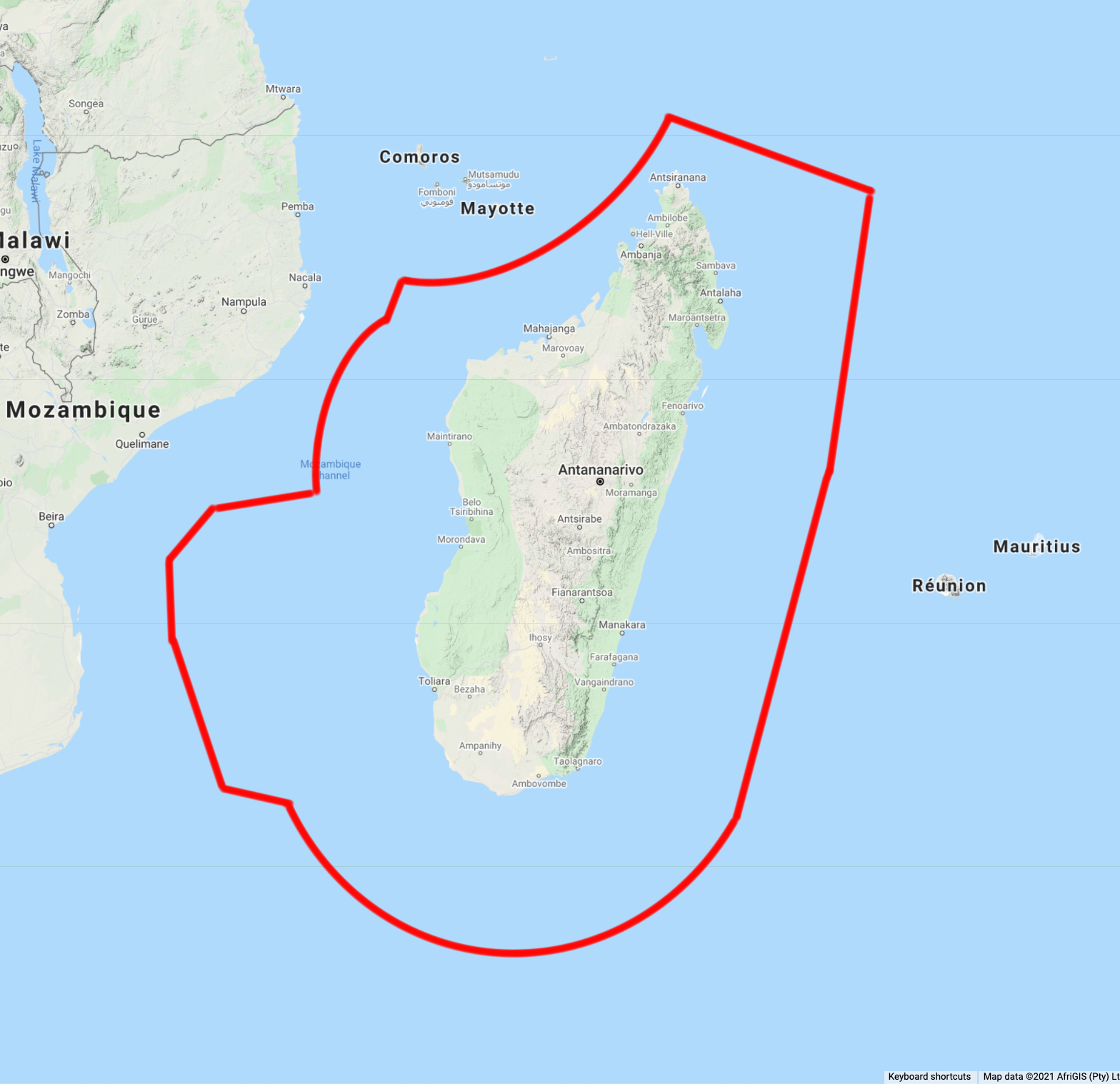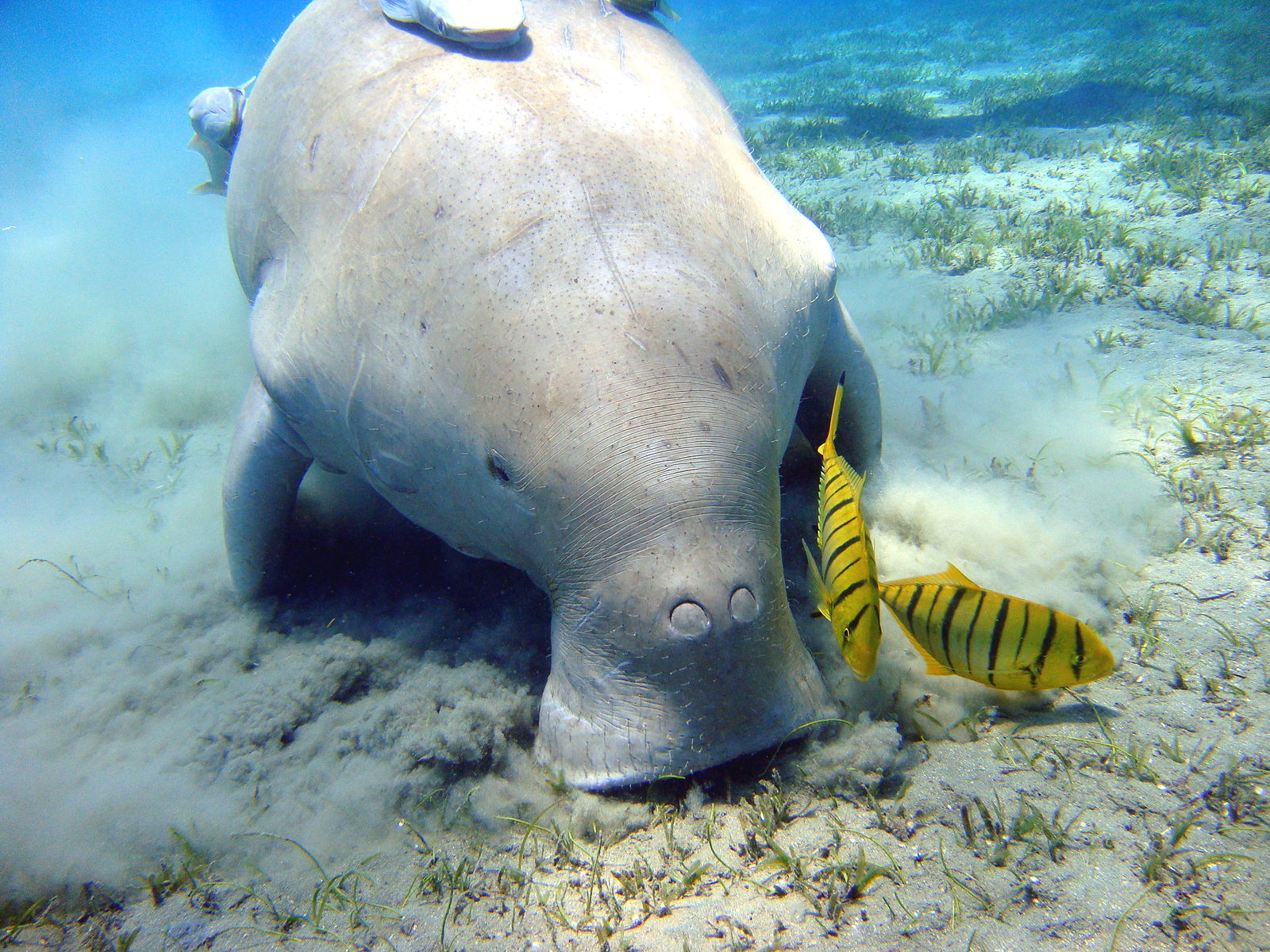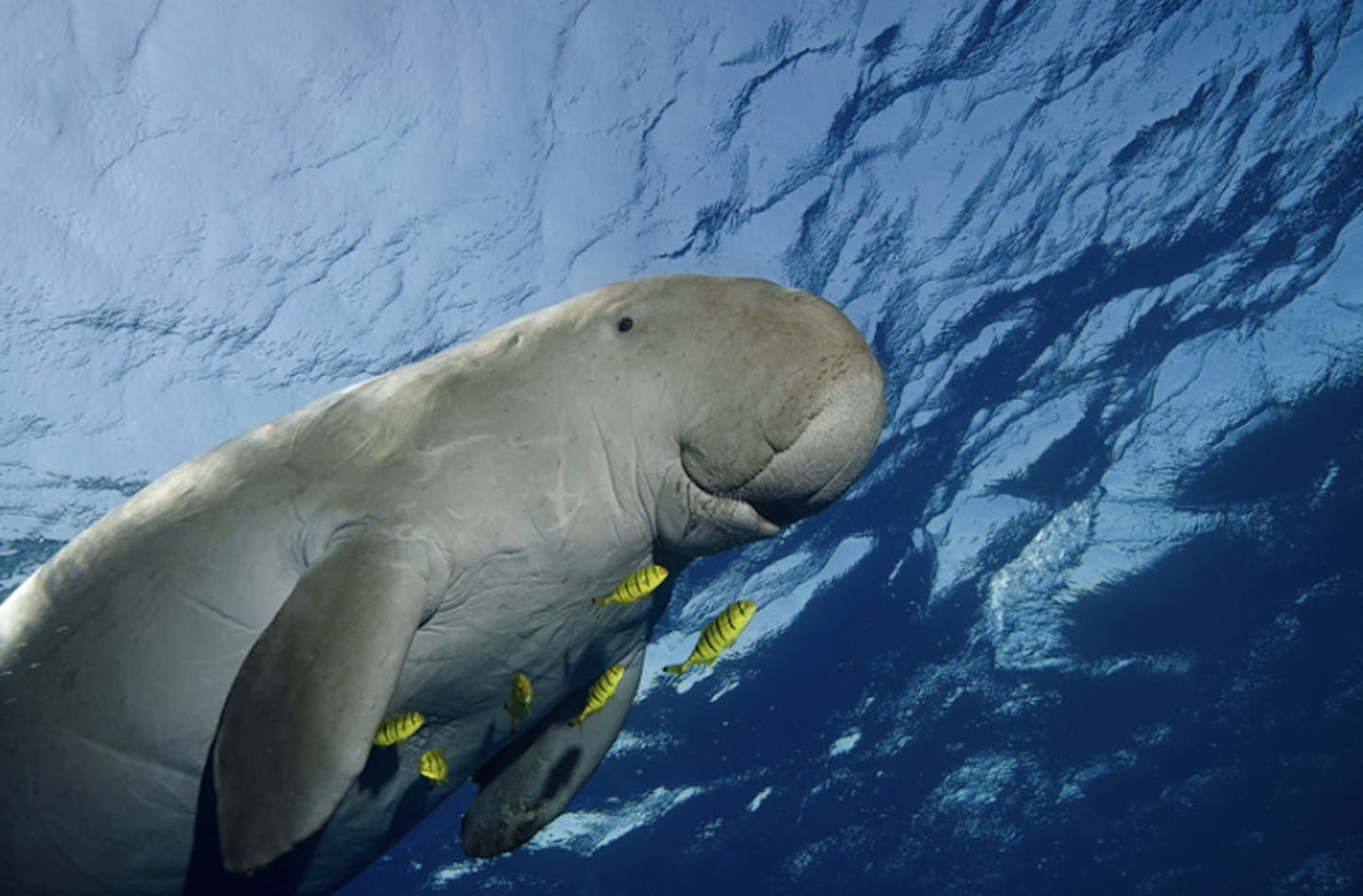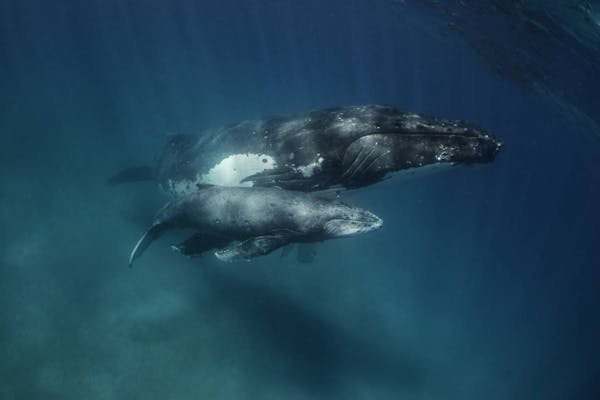Dugongs: the marine mammal that inspired the myth of mermaids
One Earth’s “Species of the Week” series highlights an iconic species that represents the unique biogeography of each of the 185 bioregions of the Earth.
If an elephant, a hippopotamus, a dolphin, and a manatee magically merged into one creature, it might look like a dugong. In fact, dugongs (Dugong dugon) are cousins of manatees and share a similar appearance, but for their dolphin fluke-like tail, shorter fins, and long, more prehistoric-looking face. Both are related to elephants, but not hippos.

The dugong is the flagship species of the Madagascar Mangroves ecoregion, located in the Madagascar Island (AT6) bioregion.
Unlike manatees, which are freshwater mammals, dugongs stick strictly to marine waters. A species of sea cow found throughout the warm latitudes of the Indian and western Pacific Oceans, dugongs can grow to lengths of more than 13 feet and weights of over one ton.
The dugong is the only exclusively marine mammal that is herbivorous. It grazes on sea grasses day and night, spending most of its life in sea beds. The dugong’s brain is very small compared to its body size, weighing a maximum of about 11 oz, about 0.1% of the animal's body weight. The disparity is likely because the dugong does not have to wield its mental power to develop complex hunting strategies to capture prey.

Image credit: Courtesy of Marsa Alam
Dugongs swim by moving their whale-like tail up and down and by use of their two flippers. They reproduce via internal fertilization, gestate for one year, and give birth to one large calf, which they nurse for as long as a year and a half. The mother helps her young reach the surface and take its first breath.
Adult dugongs do not have any natural predators, but juveniles have to watch out for saltwater crocodiles, killer whales, and large coastal sharks. But both have long been hunted for their meat, oil, skin, bones, and teeth. Though they are now legally protected throughout their range, they’re still threatened by habitat destruction, human activity, and accidental capture in fisheries. With its long lifespan of 70 years or more and slow rate of reproduction, its populations are vulnerable to extinction.
The dugong, along with the manatee, is believed to be the inspiration for ancient seafaring tales of mermaids and sirens, their faces having been spied by explorers when they rose to the surface for a breath of air.
Explore Earth's Bioregions
.png?auto=compress%2Cformat&w=200)
.%20Image%20credit%20%C2%A9%C2%A0Diego%20Grandi%20_%20Dreamstime.jpg?auto=compress%2Cformat&h=600&w=600)


